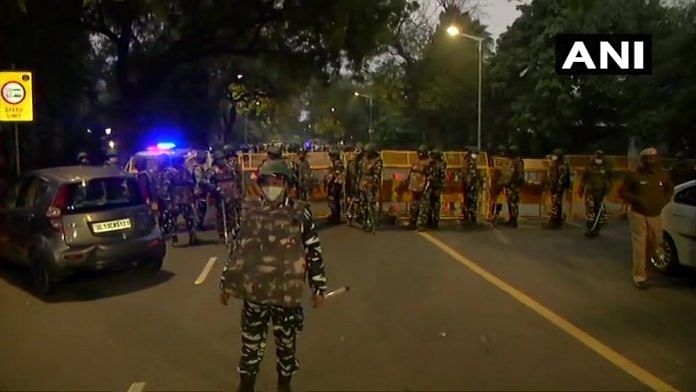New Delhi: Almost a month after the blast outside the Israel embassy in New Delhi — in which a letter was found at the spot calling the explosion just a “trailer” — the National Investigation Agency (NIA), which is probing the case, has found it was “not written by an Indian”.
According to sources in the agency, a forensic linguistics of the letter was conducted, and experts believe that the writer was from somewhere in Afghanistan or Turkey.
Forensic linguistics helps analyse written documents by studying dialect, grammar, sentence construction and other linguistic areas to determine the origin of the author, among other things.
Although, in such cases, this analysis does not provide any specific or definite leads, it helps in taking a line of investigation, sources said.
The NIA is also probing the involvement of Jaish-Ul-Hind, an unknown organisation that had claimed responsibility for the blast soon after. Not much is yet known of the origins of Jaish-Ul-Hind or which country it’s based out of.
A low intensity blast was reported on 29 January outside the Israel Embassy on Aurangzeb Road in New Delhi, less than one-and-half km from where the Beating Retreat ceremony was held.
The blast damaged a few cars parked in the area around the embassy but no one was injured in the explosion.
From the spot, an envelope that was addressed to the Israeli ambassador was found, which referred to Iran’s General Qasem Soleimani and nuclear scientist Mohsen Fakhrizadeh as “martyrs”. Both Iranians were killed in separate incidents last year.
Also read: Incidents like terror attack on embassy will only bring India-Israel closer — envoy Ron Malka
Layered voice analysis of suspects
The agency has also narrowed down over 30 suspects, including foreign nationals, who were seen roaming around the areas of the embassy on the day of the blast and a week before that, and a “layered voice analysis” (LVA) of the suspects is also being carried out, NIA sources said.
LVA identifies various types of stress, cognitive processes and emotional reactions from voice samples.
Whether a person is uneasy, confident, stressful, emotional, scared — all these can be told from the samples. This is used as a technique as part of investigation in many cases of crime and does not require court permission or individual consent, like the lie detector or polygraph tests.
“Forensic linguistics has been done and (it was) found that language and writing in the letter is not that of an Indian. Experts suspect it to be from two regions — Afghanistan or Turkey. Moreover, we are taking help of Layered Voice Analysis to further narrow down on suspects,” a source said.
“These are people who have been identified with the help of CCTV cameras outside the embassy. We accessed footage of even a week before the blast. We are working on the leads,” the source added.
The investigation agency is also taking assistance from Israel and another foreign country, which NIA sources refused to reveal, to reach a breakthrough in the case.
“We have sought help from experts internationally,” the source said.
Jaish-Ul-Hind, Pakistan connection, Telegram post
Soon after the blast, the Jaish-Ul-Hind had claimed responsibility for it.
A screenshot claiming to be from messaging service Telegram also went viral on social media.
Although initially the agencies thought that it was an attempt to “mislead the probe”, further digging revealed that the Telegram post originated from Herat in Afghanistan and was promoted on social media by “Pakistan-based handles” and some entities in Turkey, sources said.
Herat is the third largest city in Afghanistan and situated in its western parts.
The NIA has written to Telegram in the UK to provide more details on the said post, the source said.
“While the post seems to have originated from Afghanistan, the number through which the data was being operated is that of Pakistan. The Jaish-Ul-Hind connection cannot be ignored or completely overlooked. We are digging further. The investigation is on,” the source added.
In the viral screenshot, Jaish-Ul-Hind had claimed, “By the grace and help of Almighty Allah, soldiers of Jaish-Ul-Hind were able to infiltrate a high-security area in Delhi and carry out an IED attack.”
“This Allah willing is the beginning of a series of attacks that would target major Indian cities and payback in kind to the atrocities committed by the Indian state. Wait and we are waiting too.”
Also read: Govt hands over probe into Delhi’s Israel Embassy bomb blast case to NIA



